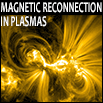Speaker
Dr
Alessandro Retinò
(Laboratoire de Physique des Plasmas, Palaiseau, France)
Description
The microphysics of magnetic reconnection (i.e. the physics at proton
scales and below) is one of
the most important aspects of reconnection and the target of the
recently launched NASA/MMS
mission. Among different open issues related to the microphysics,
understanding the mechanisms of
particle heating and acceleration is one of the most important. The
Earth’s magnetopause is an
excellent laboratory for studying such problem, especially at the
subsolar point where reconnection
is relatively steady and easier to investigate with spacecraft data.
Despite of being initially a high-
latitude mission, the ESA/Cluster spacecraft have crossed the subsolar
magnetopause starting from
2008. During such orbits two spacecraft are separated by ~10s-100s
km (proton/sub-proton scales)
while being apart ~ 1000s km (fluid scales) from the others. This
special configuration allows novel
studies of the microphysics of reconnection with two-points
measurements, while the large-scale
context of reconnection is provided by the other spacecraft. Here we
present a few examples of
subsolar magnetopause reconnection from such orbits. For one such
case, the observation of a jet
reversal indicates that the spacecraft are close to the X-line. Two-point
observations around the X-
line are used to identify a very thin rotational discontinuity (having a
thickness of ~ 15 electron
gyroradii) and to study electron heating mechanisms therein. We
discuss the relevance of such
Cluster measurements for the reconnection science that will be done
with data from upcoming MMS
magnetopause orbits.
Primary author
Dr
Alessandro Retinò
(Laboratoire de Physique des Plasmas, Palaiseau, France)
Co-authors
A. Chasapis
(Laboratoire de Physique des Plasmas, Palaiseau, France)
A. Vaivads
(Swedish Institute of Space Physics, Uppsala, Sweden)
R. Nakamura
(Space Research Institute, Graz, Austria)
Y. Khotyaintsev
(Swedish Institute of Space Physics, Uppsala, Sweden)

